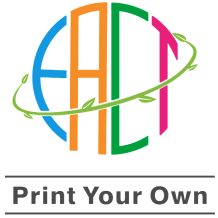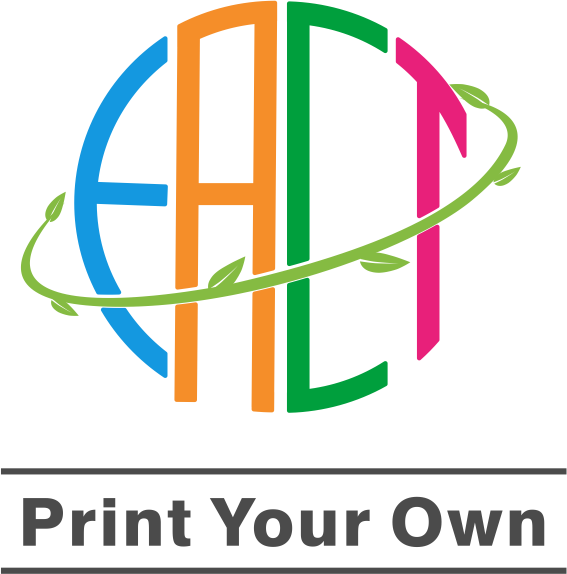From Imagination to Fabric: The Art of Custom Design Printing
Custom design fabric printing may feel like a mystery when you first encounter it. How exactly does your artwork make its way from a digital file to a roll of printed fabric? What’s the best way to prepare your design? And how do you make sure the final result looks as good in person as it does on screen?
This blog is here to demystify the custom printing process and explain why more creators are choosing custom printed fabrics. Let’s continue reading to find out more!
Here are several common printing methods:
Direct to Garment (DTG): Digital inkjet printing directly onto fabric for detailed, full-color designs.
Heat Transfer Printing: Prints designs onto special paper, then transfers them to fabric with heat.
Screen Printing: Applies ink through stencils, ideal for bold, limited-color designs.
Choosing the right fabric is also important, as each material interacts with ink differently and affects the final look and feel.
1. Design Preparation
Designers use programs like Adobe Illustrator or Photoshop to create high-resolution files. Proper formatting and color calibration ensure the print is sharp and vibrant. Preparing artwork carefully at this stage prevents surprises later.
2. Selecting Fabric and Colors
The choice of fabric depends on the intended use. For example, lightweight cotton is great for clothing, sturdy canvas is great for bags, and silky satin is great for scarves. At the same time, color selection must match the design and printing technology to ensure fidelity.
3. Printing and Finishing
Once the design and fabric are ready, the digital printing process begins. Advanced printers apply ink precisely onto the fabric, which then goes through heat-setting or steaming to lock in the colors. Some providers also offer washing or softening steps to improve texture and durability.
Unique Expression: Every yard can showcase a personal style or brand identity, setting products apart.
Small-Batch Flexibility: Ideal for limited runs, sampling or exclusive collections without excessive minimum orders.
Stronger Branding: Custom patterns enhance brand recognition on apparel, accessories and home décor.
Sustainability: On-demand production minimizes waste and excess inventory, aligning with eco-conscious values.
Fashion: From emerging designers to established labels, custom prints allow full creative control over collections.
Home Decor: Customize curtains, cushions and upholstery transform spaces with personalized style.
Craft and DIY: Artists and makers utilize printed fabrics for quilts, bags and textile art projects.
Commercial Branding: Unique printed materials can elevate items such as branded tote bags and event decorations.
Being able to create your own fabric opens up endless possibilities for innovation and storytelling.
Start with a Sample: Test your design on a small piece of fabric first. This way you can see how the color translates to the fabric and how the material performs.
Work in High Resolution: Ensure your artwork is created at 150–300 DPI in its final print size. This resolution range delivers crisp details and prevents blurring or pixelation in the finished product.
Check Fabric Properties: Each fabric behaves differently. Some absorb ink vibrantly, while others mute color slightly. Think about drape, stretch, weight and washability when choosing the best base for your design.
Ready to turn your vision into something tangible? Start designing today!
This blog is here to demystify the custom printing process and explain why more creators are choosing custom printed fabrics. Let’s continue reading to find out more!
The Rise of Personalization: Why Custom Fabrics Matters
Whether in fashion, home decor or artistic ventures, the pursuit of individuality and bespoke design is driving innovation like never before. Customers crave unique products that tell their own stories. This shift is fueling the demand for custom fabrics.What Is Custom Fabric Printing?
Custom fabric printing is the process of transferring digital designs onto fabric, allowing artists and brands to produce textiles that are truly one-of-a-kind. Unlike traditional fabric production, which relies on repeated patterns and fixed designs, custom printing puts individuality first.Here are several common printing methods:
Direct to Garment (DTG): Digital inkjet printing directly onto fabric for detailed, full-color designs.
Heat Transfer Printing: Prints designs onto special paper, then transfers them to fabric with heat.
Screen Printing: Applies ink through stencils, ideal for bold, limited-color designs.
Choosing the right fabric is also important, as each material interacts with ink differently and affects the final look and feel.
The Creative Journey: From Idea to Printed Fabric
The process of bringing a custom design to life on fabric typically involves several key stages:1. Design Preparation
Designers use programs like Adobe Illustrator or Photoshop to create high-resolution files. Proper formatting and color calibration ensure the print is sharp and vibrant. Preparing artwork carefully at this stage prevents surprises later.
2. Selecting Fabric and Colors
The choice of fabric depends on the intended use. For example, lightweight cotton is great for clothing, sturdy canvas is great for bags, and silky satin is great for scarves. At the same time, color selection must match the design and printing technology to ensure fidelity.
3. Printing and Finishing
Once the design and fabric are ready, the digital printing process begins. Advanced printers apply ink precisely onto the fabric, which then goes through heat-setting or steaming to lock in the colors. Some providers also offer washing or softening steps to improve texture and durability.
Why Choose Custom Over Mass Production?
The benefits of custom fabric printing make it increasingly popular among creators:Unique Expression: Every yard can showcase a personal style or brand identity, setting products apart.
Small-Batch Flexibility: Ideal for limited runs, sampling or exclusive collections without excessive minimum orders.
Stronger Branding: Custom patterns enhance brand recognition on apparel, accessories and home décor.
Sustainability: On-demand production minimizes waste and excess inventory, aligning with eco-conscious values.
Applications: Where Creativity Meets Function
Custom printed fabrics have been widely used in many industries:Fashion: From emerging designers to established labels, custom prints allow full creative control over collections.
Home Decor: Customize curtains, cushions and upholstery transform spaces with personalized style.
Craft and DIY: Artists and makers utilize printed fabrics for quilts, bags and textile art projects.
Commercial Branding: Unique printed materials can elevate items such as branded tote bags and event decorations.
Being able to create your own fabric opens up endless possibilities for innovation and storytelling.
Getting Started: Tips for New Designers
If you’re just beginning your journey into custom fabrics, here are some tips to ensure success:Start with a Sample: Test your design on a small piece of fabric first. This way you can see how the color translates to the fabric and how the material performs.
Work in High Resolution: Ensure your artwork is created at 150–300 DPI in its final print size. This resolution range delivers crisp details and prevents blurring or pixelation in the finished product.
Check Fabric Properties: Each fabric behaves differently. Some absorb ink vibrantly, while others mute color slightly. Think about drape, stretch, weight and washability when choosing the best base for your design.
Conclusion: Your Creativity, Your Fabric
Custom textiles are no longer limited to large fashion houses or industrial suppliers. With the rise of digital tools and accessible printing services, you can now turn your vision into reality. Whether you are designing for fashion, interiors or your next project, this is your moment to stand out.Ready to turn your vision into something tangible? Start designing today!

 USD
USD



